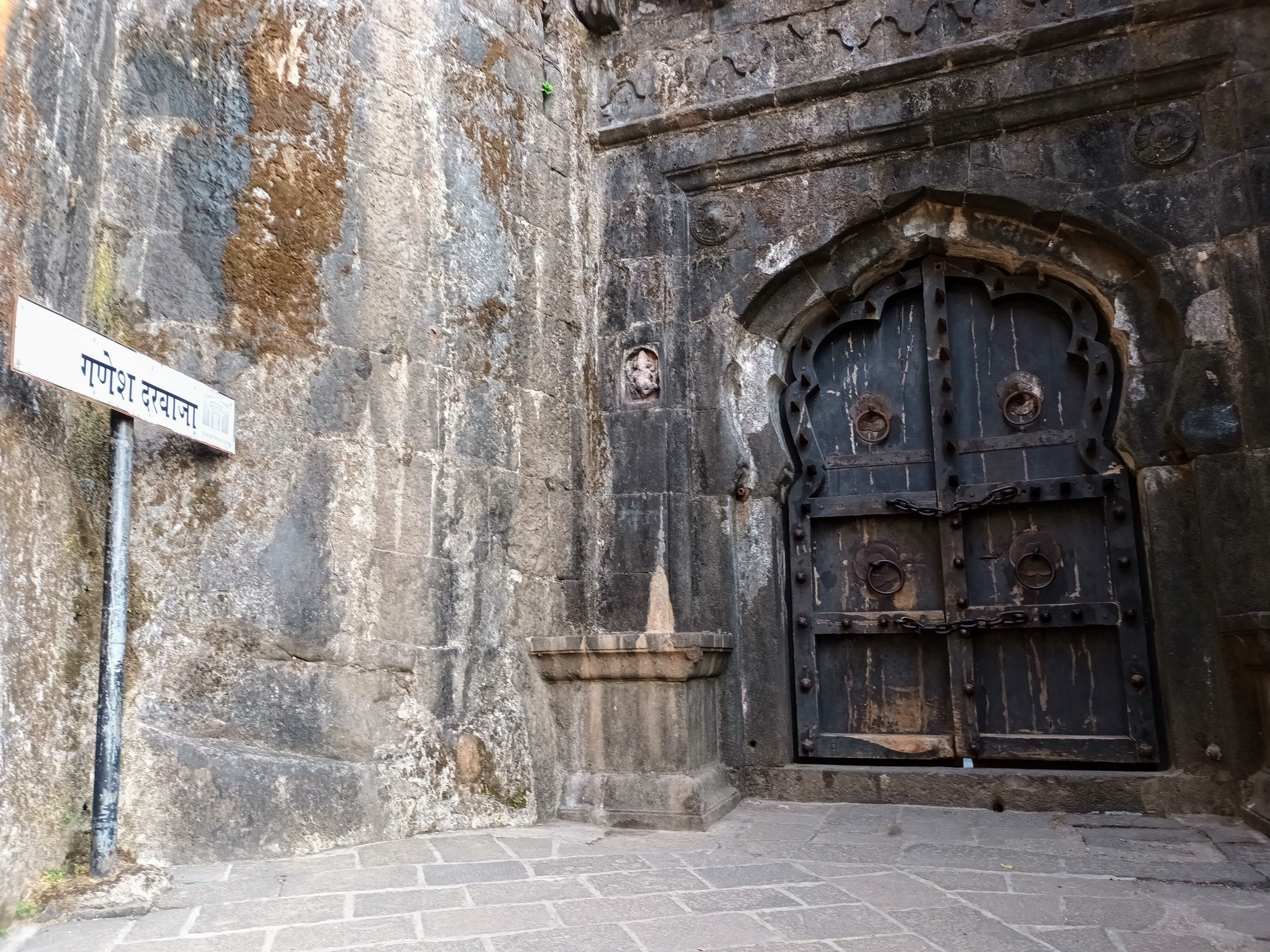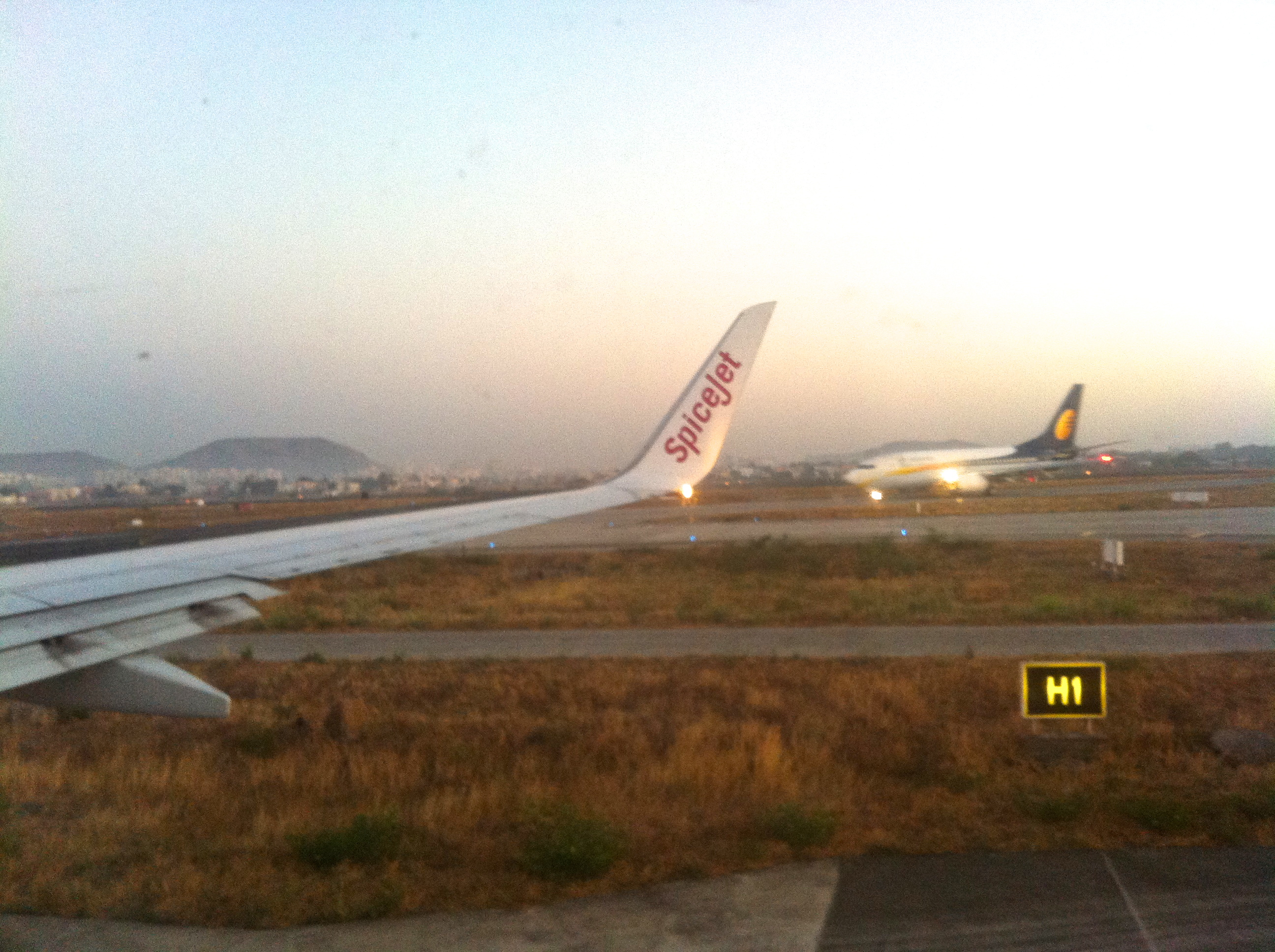|
Lohgad
Lohagad is one of the many hill forts of Maharashtra state in India. Situated close to the hill station Lonavala and northwest of Pune, Lohagad rises to an elevation of above sea level. The fort is connected to the neighboring Visapur fort by a small range. The fort was under the Maratha empire for the majority of the time, with a short period of 5 years under the Mughal empire. History Lohagad has a long history with several dynasties occupying it at different periods of time: Satavahanas, Chalukyas, Rashtrakutas, Yadavas, Bahamanis, Nizams, Mughals and Marathas. Chatrapati Shivaji Maharaj captured it in 1648 AD, but he was forced to surrender it to the Mughals in 1665 AD by the Treaty of Purandar. Chatrapati Shivaji Maharaj recaptured the fort in 1670 AD and used it for keeping his treasury. This fort was used to keep the winnings from Surat. Later in Peshwa time Nana Phadnavis used this fort for living for some time and built several structures in the fort such as a ... [...More Info...] [...Related Items...] OR: [Wikipedia] [Google] [Baidu] |
Visapur Fort
Visapur Fort (also called Visapoor Fort) is a hill fort near Visapur village in Maharashtra, India. It is a part of the Lohagad-Visapur fortification. Location It is located in Pune district, 5 to 6 km from Malavli Railway station out of which 3 km is steep road. It has an elevation of 1084 meters above sea level. Friends of forts website It is built on the same plateau as Lohagad. History It was built during 1713-1720 CE by Balaji Vishwanath, the first of[...More Info...] [...Related Items...] OR: [Wikipedia] [Google] [Baidu] |
Pune District
Pune district (Marathi pronunciation: Help:IPA/Marathi, [puɳeː]) is the most populous district in the Indian state of Maharashtra. The district's population was 9,429,408 in the 2011 census, making it the fourth most populous district amongst India's 640 List of districts in India, districts. This district has an urban population of 58.08 percent of its total. It is one of the most industrialized districts in India. In recent decades it has also become a hub for information technology. Officer Members of Parliament *Girish Bapat (Bharatiya Janata Party, BJP) - *Supriya Sule (Nationalist Congress Party, NCP) - *Amol Kolhe, Dr. Amol Kolhe (Nationalist Congress Party, NCP) - *Shrirang Barne (Balasahebanchi Shiv Sena, BSS) - Guardian Minister list of Guardian Minister District Magistrate/Collector list of District Magistrate / Collector District Justice District Police Commissioner list of District Police Commissioner President & Vice-President ... [...More Info...] [...Related Items...] OR: [Wikipedia] [Google] [Baidu] |
Marathas
The Marathi people (Marathi: मराठी लोक) or Marathis are an Indo-Aryan ethnolinguistic group who are indigenous to Maharashtra in western India. They natively speak Marathi, an Indo-Aryan language. Maharashtra was formed as a Marathi-speaking state of India in 1960, as part of a nationwide linguistic reorganization of the Indian states. The term "Maratha" is generally used by historians to refer to all Marathi-speaking peoples, irrespective of their caste; however, now it may refer to a Maharashtrian caste known as the Maratha. The Marathi community came into political prominence in the 17th century, when the Maratha Empire was established under Chhatrapati Shivaji; the Marathas are credited to a large extent for ending Mughal rule over India. History Ancient to medieval period During the ancient period, around 230 BC, Maharashtra came under the rule of the Satavahana dynasty, which ruled the region for 400 years.India Today: An Encyclopedia of Life in the R ... [...More Info...] [...Related Items...] OR: [Wikipedia] [Google] [Baidu] |
Pune Suburban Railway
Pune Suburban Railway, (Marathi language, Marathi: पुणे उपनगरीय रेल्वे) also known as ''Pune Local'', is a suburban rail system connecting Pune to its suburbs and neighboring villages in Pune District, Maharashtra. It is operated by Central Railway zone, Central Railway (CR), part of Indian Railways. The system operates on two routes, – and its part –. 18 trains operate on – route and 5 trains operate on – route. Also, DEMU trains operate on –– route. History The 9-car services were operated till March 2009, when 12-car services were introduced. 13 car trains are also operated. Services Stations Note: Stations in Bold are origin / terminating stations Pune–Lonavala service Lonavala–Pune service Pune–Talegaon service Talegaon–Pune service Pune–Daund–Baramati DEMU This section was electrified in 2017, but is currently served by DEMUs only. Since March 2017, three DEMUs have started to operate on Pune– ... [...More Info...] [...Related Items...] OR: [Wikipedia] [Google] [Baidu] |
Malavli
Malavli (Marathi: मळवली) is a town and a hill station in Pune district in the Indian state of Maharashtra. It is about 55 km away from the city of Pune, 139 km away from the city Mumbai and 39 km from Chinchwad. It is a major stop on the rail line connecting Mumbai and Pune. For Mumbai suburbs local trains are available from Karjat. It is also an important town in order of Lonavla Khandala Malavli on the Mumbai-Pune road link. Both the Mumbai-Pune Expressway as well as the Mumbai-Pune highway pass through Malavli, Lonavla. The population of Lonavla is around 10,000 as of 2010. History Present day Malavli was a part of the Yadava Empire. Later, the Mughals realized the strategic importance of the region and kept the region for an extended time. The forts in the region and the Mavla warriors played an important role in the history of the Maratha and Peshwa empires. In 1871, the Lonavla and Khandala hill stations were discovered by Lord Elphinstone, wh ... [...More Info...] [...Related Items...] OR: [Wikipedia] [Google] [Baidu] |
Navi Mumbai International Airport
Navi Mumbai International Airport, officially D. B. Patil International Airport, is an international airport being constructed in Navi Mumbai, Maharashtra, India. It will serve in parallel as an alternative with Mumbai's existing Chhatrapati Shivaji Maharaj International Airport (CSMIA), becoming the second airport of the Mumbai Metropolitan Region. The airport is a greenfield international airport being built by City and Industrial Development Corporation (CIDCO). It will be built in three phases, out of which the first phase of the airport will be able to handle 10 million passengers per annum. It will be expanded to its final capacity of third phase to handle more than 90 million passengers per annum. The Texas-based Jacobs Engineering Group, has charted the final masterplan for the airport, while the passenger terminals and the Air Traffic Control (ATC) tower have been designed by London-based Zaha Hadid Architects. The ₹16,700 crore (US$2.1 billion) project is being ex ... [...More Info...] [...Related Items...] OR: [Wikipedia] [Google] [Baidu] |
Pune International Airport
Pune Airport is a customs airport located approximately northeast of the historic centre of Pune in the state of Maharashtra, India. The airport is a civil enclave operated by the Airports Authority of India at the western side of Lohagaon Air Force Station of the Indian Air Force. The airport serves both domestic and international flights. In financial year 2020, the airport handled 8.09 million passengers. The airport is awarded as 'Best Airport by Hygiene Measures' in Asia-Pacific in 2020 by Airports Council International. Overview Pune Airport has a 2,540 m long runway oriented 10/28. A former secondary runway is now used as a taxiway by the Indian Air Force, IAF. A 2200m x 23m parallel taxiway was constructed by Airports Authority of India, AAI to facilitate civil operation on the southern side of runway 10/28. The airfield is equipped with night landing facilities as well as navigational facilities like DVOR/Distance Measuring Equipment, DME and an Non-Directional Beac ... [...More Info...] [...Related Items...] OR: [Wikipedia] [Google] [Baidu] |
Indrayani River
The Indrayani River originates in Kurvande village near Lonavla, a hill station in the Sahyadri mountains of Maharashtra, India. Fed by rain, it flows east from there to meet the Bhima river, through the Hindu pilgrimage centers of Dehu and Alandi. It follows a course mostly north of the city of Pune. It is revered as a holy river and is associated with religious figures such as Sant Tukaram and Dnyaneshwar. There is a hydroelectric dam called Valvan Dam on the Indrayani at Kamshet. See also *List of rivers of India *Rivers of India The rivers in India play an important role in the lives of its people. They provide potable water, cheap transportation, electricity, and the livelihood for many people nationwide. This easily explains why nearly all the major cities of India are l ... References Rivers of Maharashtra Geography of Pune district Rivers of India {{India-river-stub ... [...More Info...] [...Related Items...] OR: [Wikipedia] [Google] [Baidu] |
Namokar Mantra
The Ṇamōkāra mantra or Navkar Mantra is the most significant mantra in Jainism, and one of the oldest mantras in continuous practice. This is the first prayer recited by the Jains while meditating. The mantra is also variously referred to as the ''Pancha Namaskāra Mantra'', ''Namaskāra Mantra'', ''Navakāra Mantra'', ''Namaskāra Mangala'' or ''Paramesthi Mantra''. Below is the meaning of Namokar Mantra line by line, wherein the devotee first bows to the five supreme souls or Pañca-Parameṣṭhi: *'' Arihant''— Those who have destroyed the four inimical ''karmas'' *''Siddha'' — The persons who have achieved "Siddhi" *''Acharyas'' — The teachers who teach how to behave / live one's life ( Acharya = one who teaches Aacharan ) *''Upadhyaya'' — Preceptor of less advanced ascetics *''Sādhu'' — The monks or sages in the world practicing Samyak Charitra (right conduct) *The practitioner also says that by bowing to all these five supreme souls, *All of his or her ... [...More Info...] [...Related Items...] OR: [Wikipedia] [Google] [Baidu] |
Prakrit
The Prakrits (; sa, prākṛta; psu, 𑀧𑀸𑀉𑀤, ; pka, ) are a group of vernacular Middle Indo-Aryan languages that were used in the Indian subcontinent from around the 3rd century BCE to the 8th century CE. The term Prakrit is usually applied to the middle period of Middle Indo-Aryan languages, excluding earlier inscriptions and the later Pali. ''Prākṛta'' literally means "natural", as opposed to ''saṃskṛta'', which literally means "constructed" or "refined". Prakrits were considered the regional spoken (informal) languages of people, and Sanskrit was considered the standardized (formal) language used for literary, official and religious purposes across Indian kingdoms of the subcontinent. Literary registers of Prakrits were also used contemporaneously (predominantly by śramaṇa traditions) alongside Classical Sanskrit of higher social classes. Etymology The dictionary of Monier Monier-Williams (1819–1899), and other modern authors however, interpret ... [...More Info...] [...Related Items...] OR: [Wikipedia] [Google] [Baidu] |
Brahmi Script
Brahmi (; ; ISO: ''Brāhmī'') is a writing system of ancient South Asia. "Until the late nineteenth century, the script of the Aśokan (non-Kharosthi) inscriptions and its immediate derivatives was referred to by various names such as 'lath' or 'Lat', 'Southern Aśokan', 'Indian Pali', 'Mauryan', and so on. The application to it of the name Brahmi 'sc. lipi'' which stands at the head of the Buddhist and Jaina script lists, was first suggested by T rriende Lacouperie, who noted that in the Chinese Buddhist encyclopedia ''Fa yiian chu lin'' the scripts whose names corresponded to the Brahmi and Kharosthi of the ''Lalitavistara'' are described as written from left to right and from right to left, respectively. He therefore suggested that the name Brahmi should refer to the left-to-right 'Indo-Pali' script of the Aśokan pillar inscriptions, and Kharosthi to the right-to-left 'Bactro-Pali' script of the rock inscriptions from the northwest." that appeared as a fully developed scrip ... [...More Info...] [...Related Items...] OR: [Wikipedia] [Google] [Baidu] |







